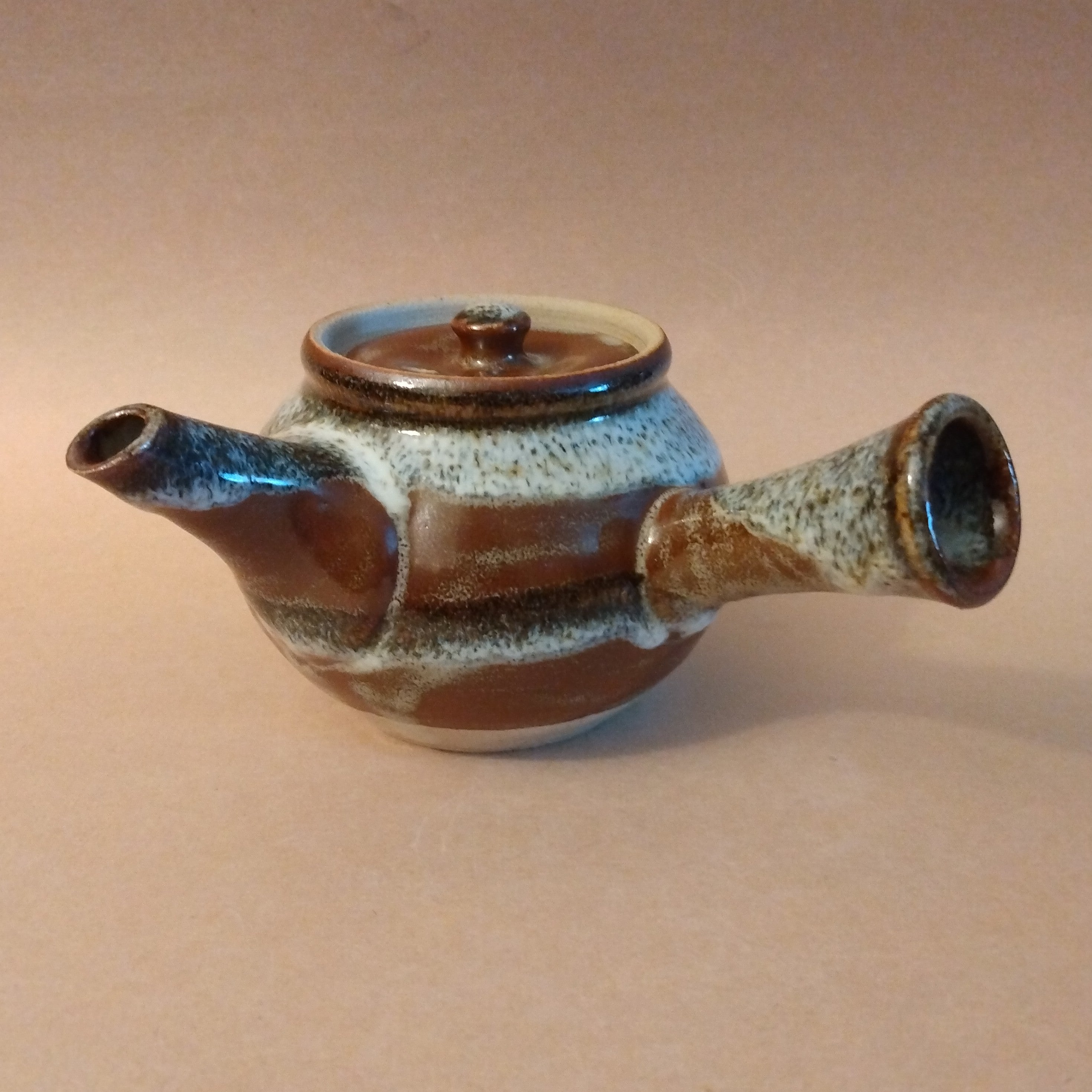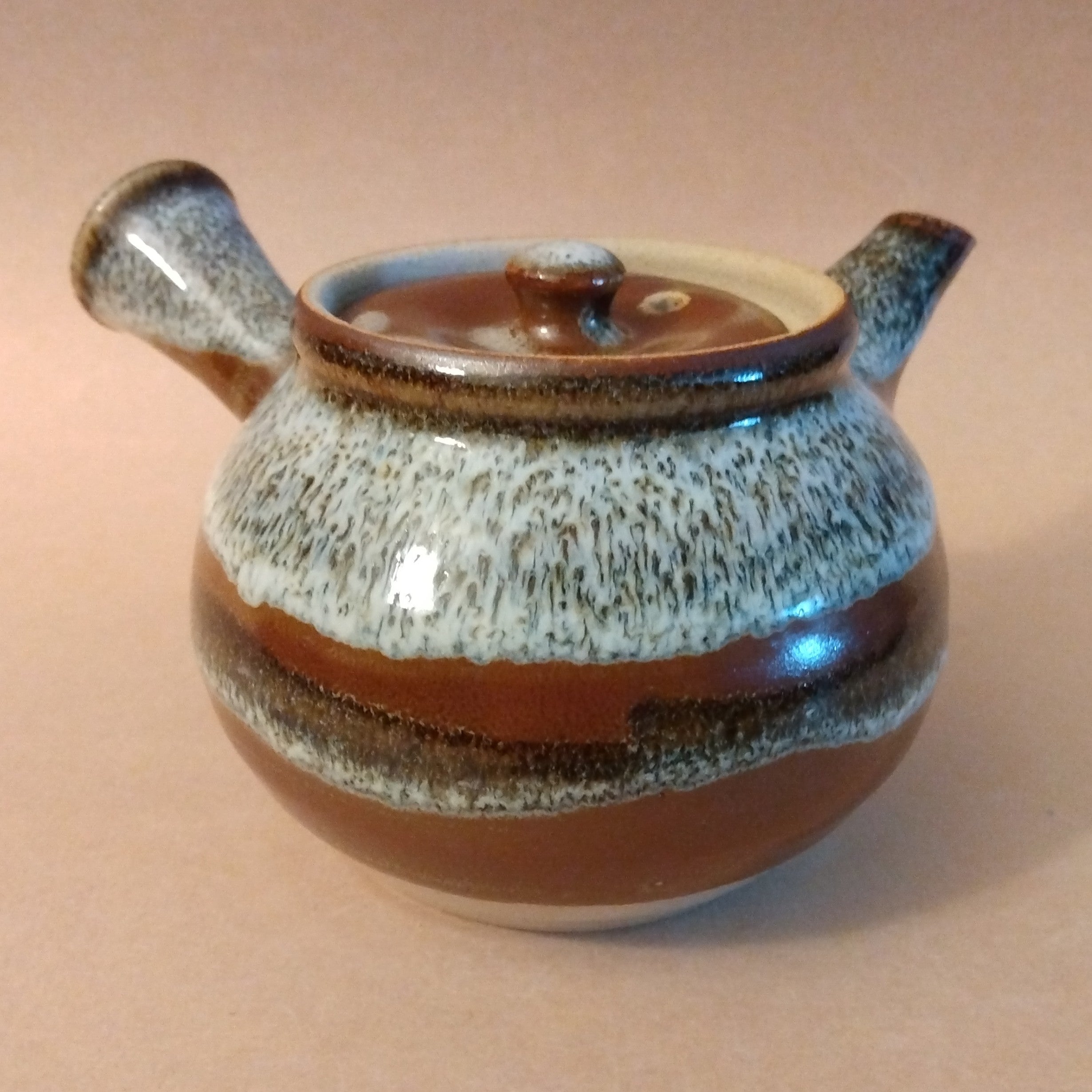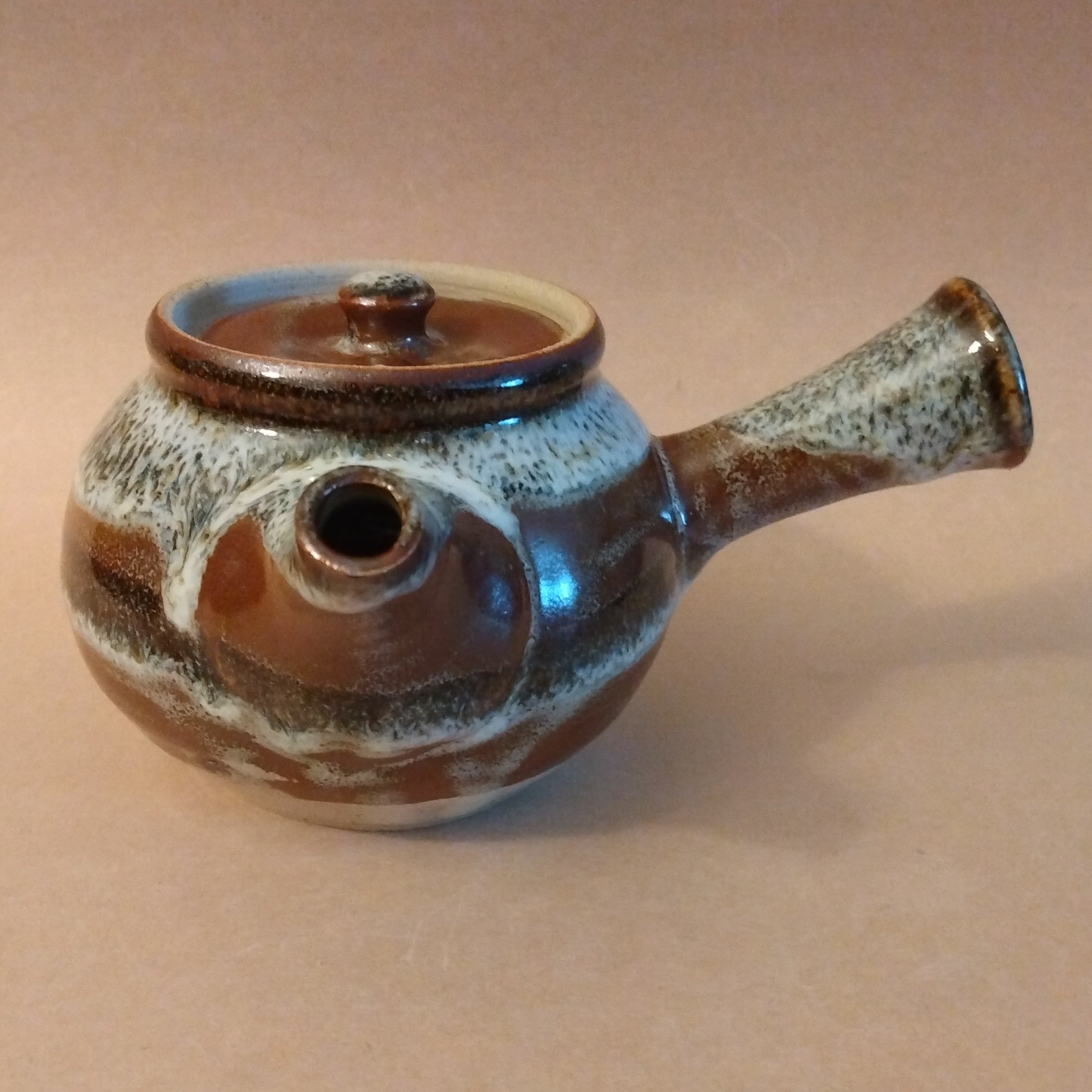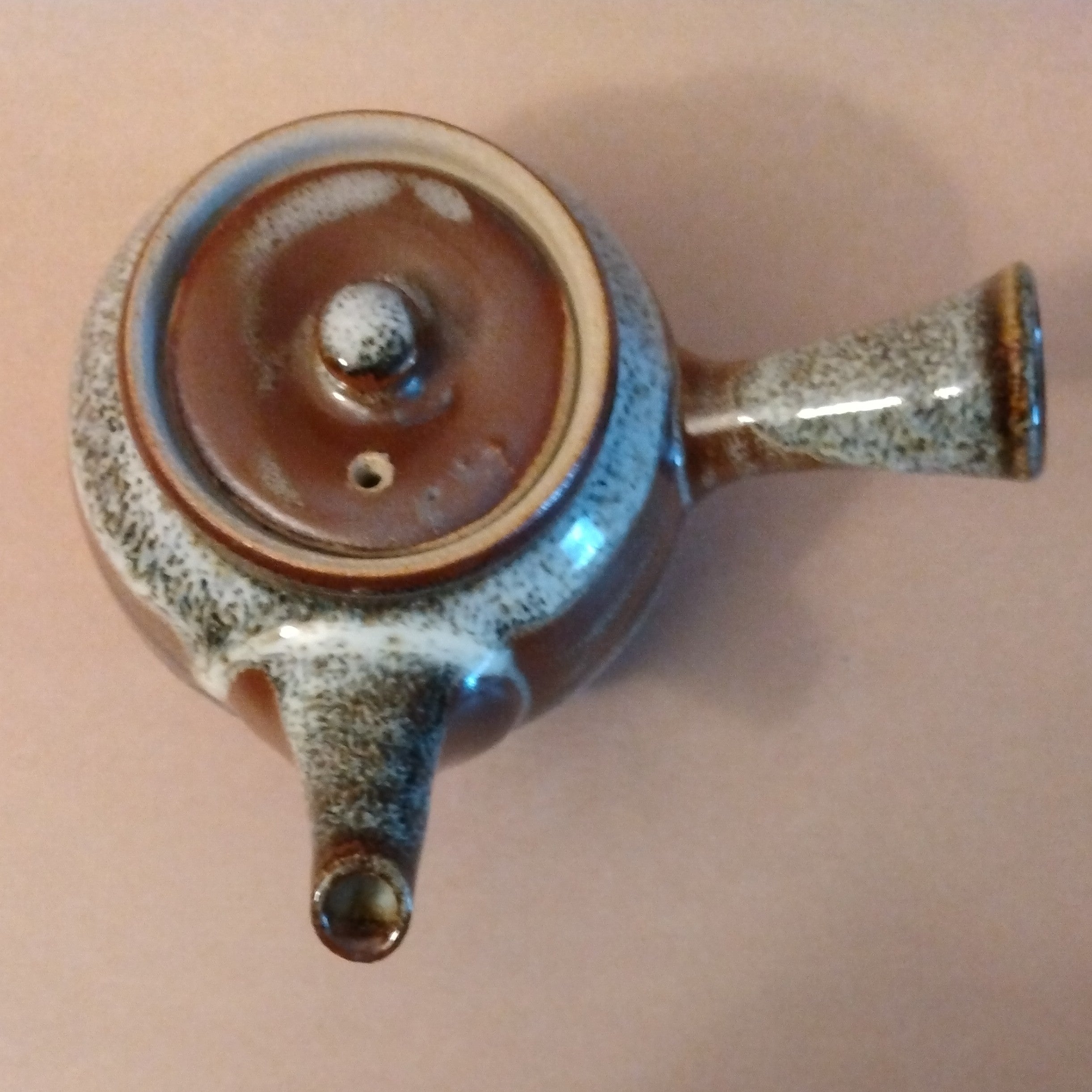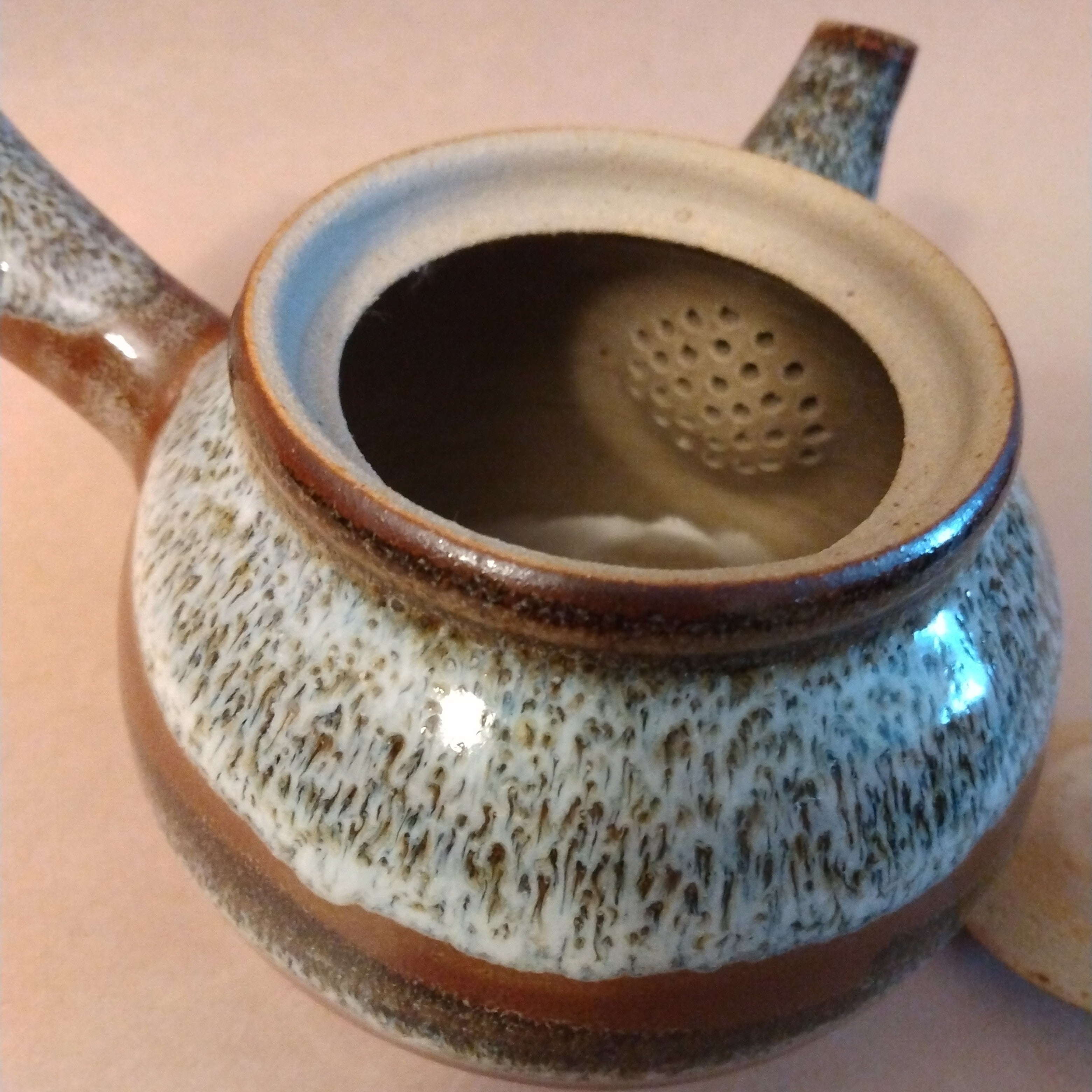Description
Mashiko-yaki Kyusu, Tea Pot, Tochigi Prefecture. This side-handle tea pot, kyusu, is a standard design in Mashiko; hearty, solid, and displaying the local kaki (persimmon-color) glaze. In addition to the kaki glaze, bands of Mashiko white and black are also used. The pot is glazed throughout so can be used for any type of tea (unlike un-glazed tea pots which are best used with one type of tea, and also not used for any flavored or scented teas). A sturdy workhorse of a tea pot that also exhibits country charm. H. 3.125"(8cm) x W. 5.75"(15cm). Weight 285 grams. Volume 310ml(10.5oz).
The town of Mashiko is located about 70 miles northwest of Tokyo, in Tochigi Prefecture. Although there is evidence of pottery manufacture in the region of Mashiko as far back as the 8th century; production in the modern age began in 1853, making it a relatively young pottery center by Japanese standards. However, whereas many traditional pottery towns disappeared when Japanese lifestyle changes made many functional clay items obsolete, Mashiko has survived and thrived as one of the largest pottery communities in the world. Much of this can be credited to life and work of Shoji Hamada, who decided to settle in this traditional clay village. Although he was a contemporary artist, he showed great respect for the work of traditional artisans, for the natural materials available from the region, and for the "Other Power" of tradition. He was a leading figure in the Japanese Folk Craft Movement, along with Soetsu Yanagi and others; such as potters Bernard Leach and Kanjiro Kawai, textile artist Keisuke Serizawa, and woodblock printer Shiko Munakata. Hamada was designated as a National Living Treasure for his preservation of Mingei (Folk Craftâ) pottery and promoted an openness which led many to follow his path to Mashiko. In the early 2000's, there are some 400 kilns operating in and around Mashiko making a wide variety of wares; from traditional styles and patterns to modern artistic works.

